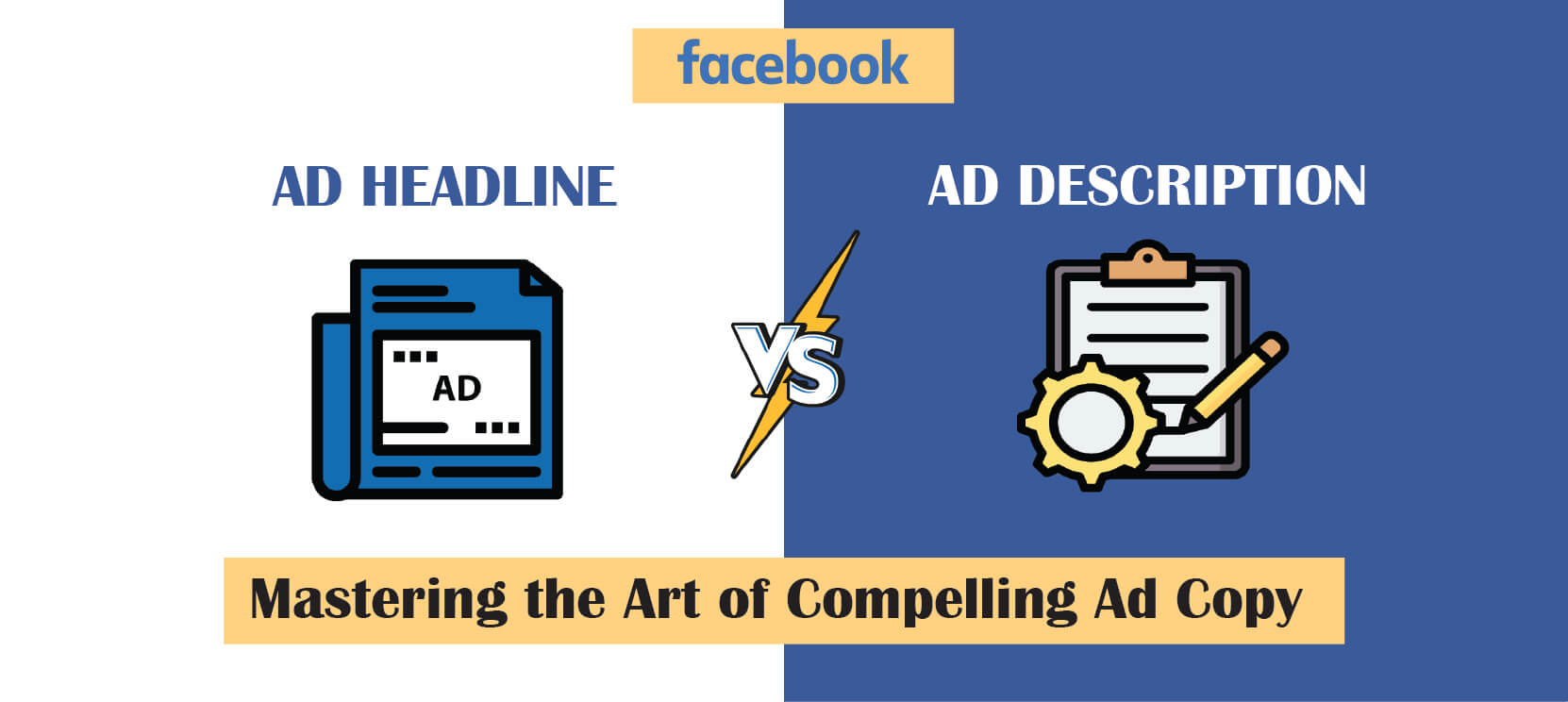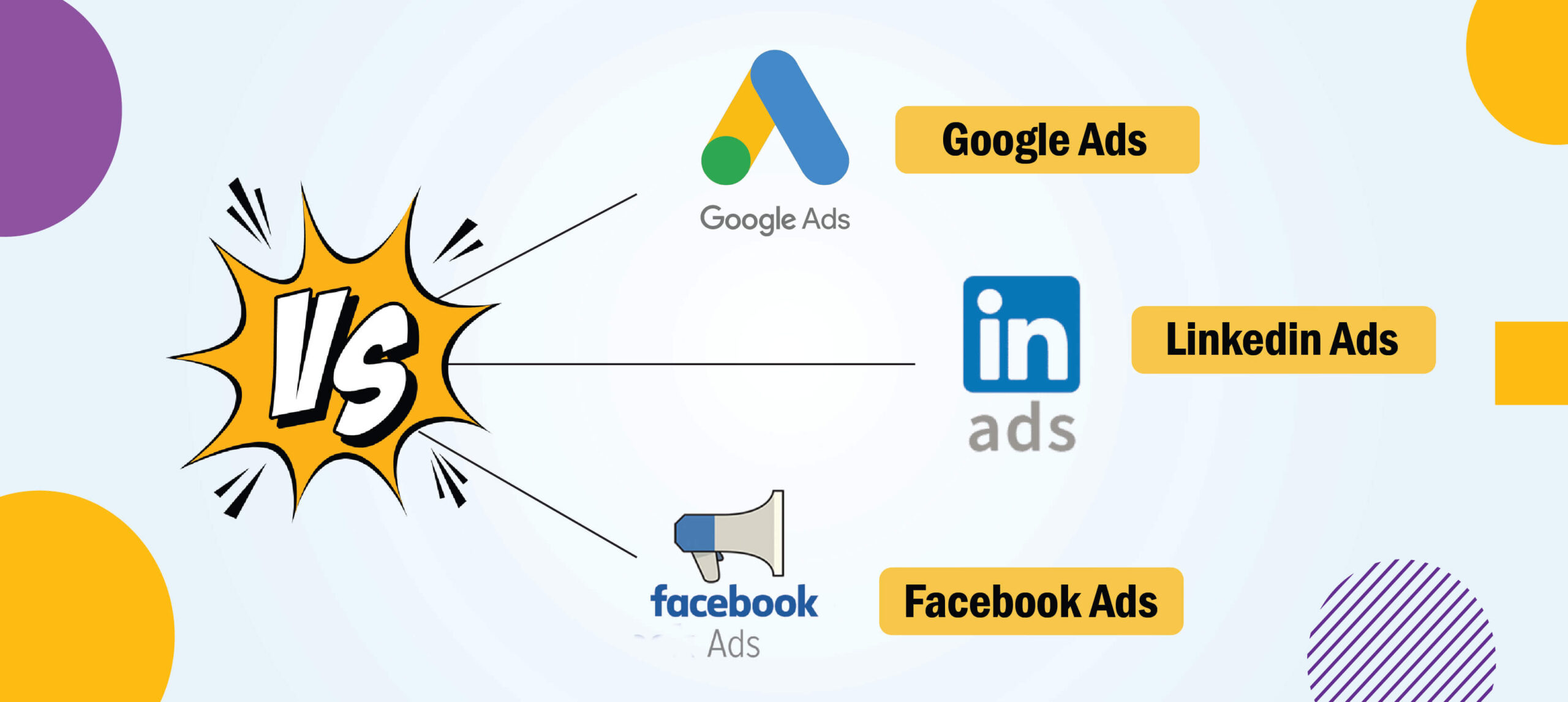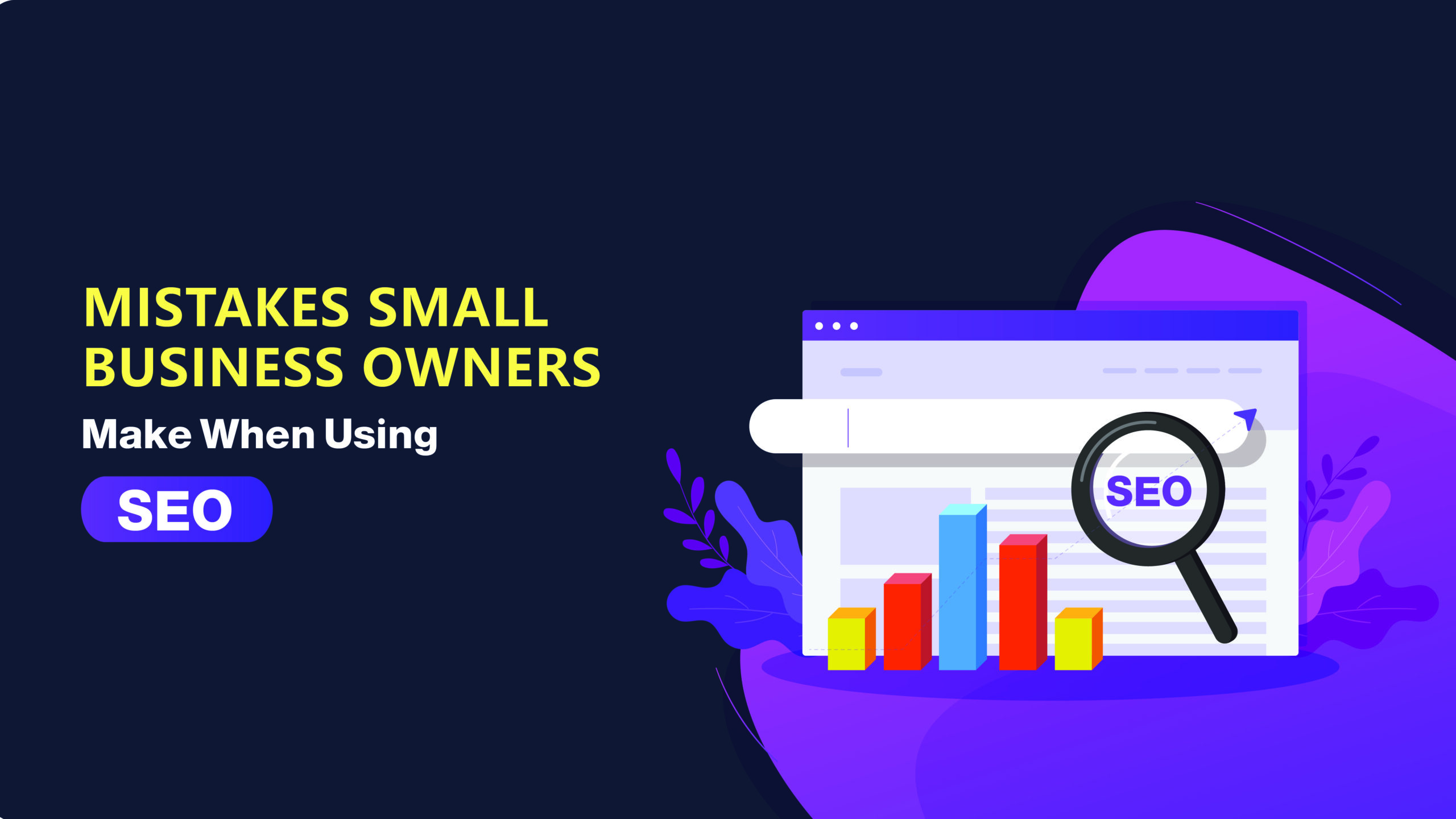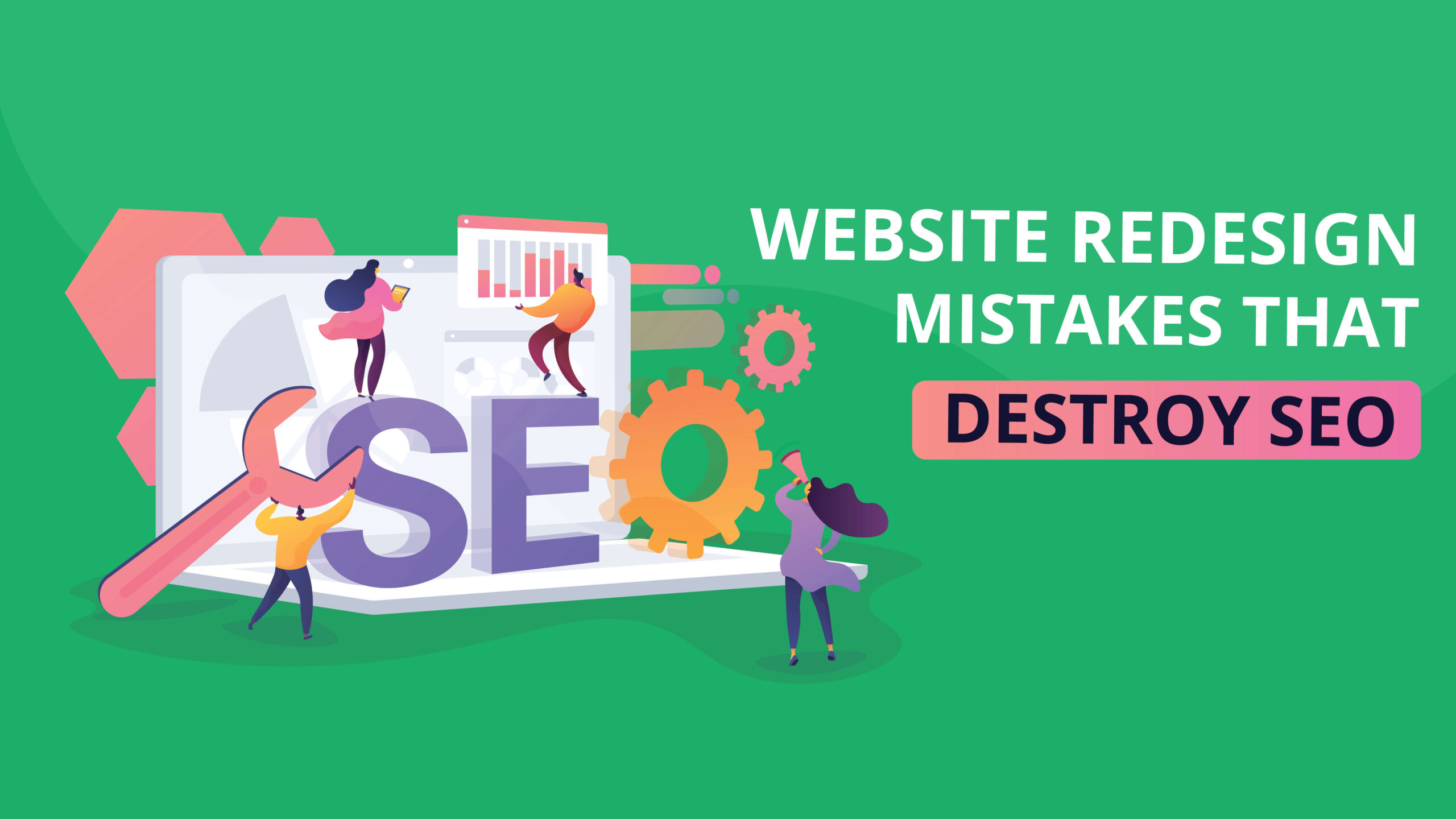Introduction
Facebook advertising has become a dominant force in this digital world, offering immense opportunity for businesses to reach out their target audience and achieve their goals.
Facebook ads plays a pivotal role in capturing users’ attention and driving conversions: the headline and the description.
Optimizing both the headline and description is crucial for creating effective and compelling Facebook ads. These components work in tandem to convey your message, generate interest, and ultimately persuade users to take action.
By understanding the key differences between the headline and description, you can create engaging content that can resonate with your target audience and can maximize your advertising efforts.
Well, Further In this blog post, we will delve into the nuances of Facebook ad headlines and descriptions, and also know about its various purposes and highlighting the strategies for optimizing each element.
Not only that, We will also explore how these components interact with each other to create a cohesive and persuasive ad experience. By the end, you’ll have a detailed understanding of the important role that both the headline and description play in driving the success of your Facebook ad campaigns.
Also Read: Best Social Media Platforms for Restaurants
Facebook Ad Headline:
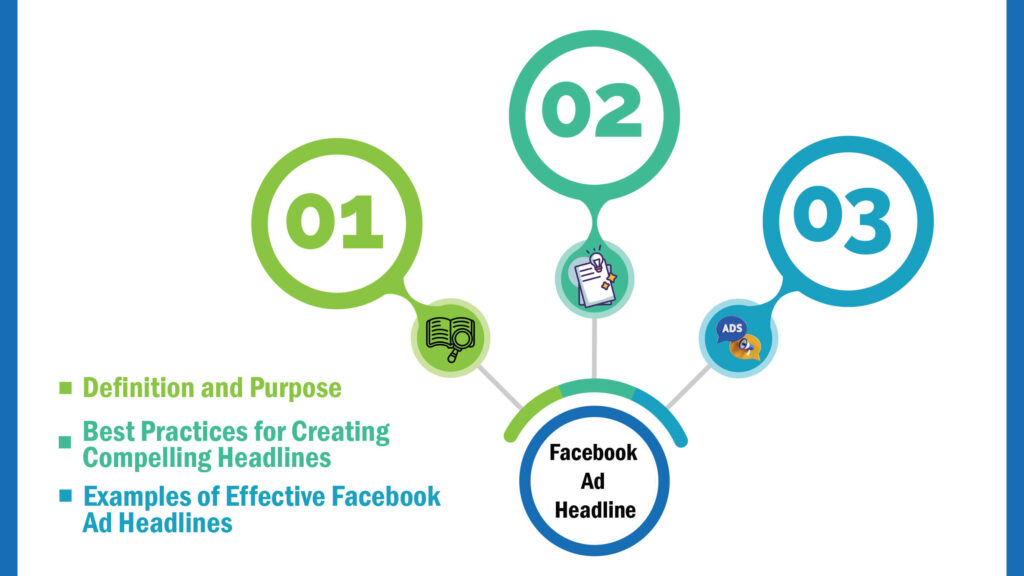
1. Definition and Purpose:
The Facebook ad headline acts as a concise and attention-grabbing statement that captures the user’s attention and increases their engagement.
A well-crafted headline sets the tone for the ad and helps users to know more about your offering.
2. Best Practices for Creating Compelling Headlines:
To create compelling headlines that can attract your targeted audience, consider this following best practices given below:
- Using strong and persuasive language: Choose impactful words and phrases that evoke emotion and prompt action. Employing words like “discover,” “uncover,” “transform,” or “exclusive” will help you to create a sense of urgency.
- Highlighting unique selling points (USPs): Clearly let your audience know what sets your product or service apart from the competition. Focus on the key benefits or features that make your offering valuable to your audience. Highlighting USPs helps grab attention and generate interest.
- Creating a sense of urgency or curiosity: Use time-sensitive language or scarcity elements to create a sense of urgency. Like “limited time offer,” “act now,” or “only a few spots left” which will motivate users to take immediate action. Additionally, raising the curiosity of your audience by posting intriguing questions or teasing valuable information can effectively raise the users interest.
3. Examples of Effective Facebook Ad Headlines:
To gain inspiration and learn from successful ad campaigns, analyze the following examples:
- Analyzing successful ad campaigns and their headlines: Discover ads that have significant engagement and conversions online. Analyze the headlines used in these ads to identify common elements such as strong emotional appeal, clear USPs, or clever wordplay.
- Learning from industry leaders and their strategies: Study the advertising strategies adopted by the industry leaders within your niche. Analyze their headlines to understand how they effectively communicate and capture the attention of their targeted audience. Take note of any creative approaches or unique angles they employ.
By studying successful ad campaigns and adopting the strategy of industry leaders, you can gain valuable insights of how to craft a compelling headline that can attract your targeted audience.
Remember to adapt these insights to suit your specific brand and offering, ensuring your headlines align with your unique value proposition.
Also Read: Tik-Tok Ads vs Facebook Ads
Facebook Ad Description:
1. Definition and Purpose:
The Facebook ad description complements the headline by providing additional text that expands on the message and gives more information about your product, service, or offer.
While the headline captures attention, on the other hand description aims to maintain that interest and persuade your audience to take action.
2. Crafting a Persuasive Ad Description:
To create a persuasive ad description, consider the following strategies given below:
- Aligning the description with the headline’s message: Ensure that the description reinforces the message which is there on the headline in a detailed way. Both description and headline should go hand in hand to create a compelling narrative.
- Communicating the value proposition clearly: Do clearly explain the value and benefits of your product or service. Let the audience know how it solves their problems effectively and it helps them to fulfill their needs. Use persuasive language to know the value they will gain by engaging with your ad.
- Incorporating relevant keywords and phrases: Include relevant keywords and phrases that will help you to resonate with your target audience. This helps you to improve your ads visibility.
Also Read: Targeting Small Business Owners on Facebook
3. Examples of Compelling Ad Descriptions:
To gain inspiration and understand the storytelling aspect of descriptions, consider the following:
- Examining well-crafted descriptions from various industries: Analyze successful ad campaigns from different industries and study their descriptions. Look for elements such as emotional appeals, storytelling techniques, social proof, or compelling calls-to-action. Understand how this description has conveyed their brand message which also encouraged their audience to click into their ads.
- Understanding the storytelling aspect in descriptions: Convey your message in a story telling way in your ads description. Use narratives that resonate with your audience and evoke emotions. Create a compelling story that showcases the transformation or positive impact your product or service can bring to users’ lives. Storytelling helps create a more emotional connection with your audience which makes your ad more memorable.
By examining well-crafted ad descriptions from various industries and understanding the power of storytelling, you can enhance the effectiveness of your Facebook ad descriptions.
Remember to tailor your descriptions to your target audience and focus on clearly communicating the unique value proposition of your offering.
Also Read: How to Target Seniors on Facebook
The Interplay Between Headline and Description:
1. Maintaining Consistency and Coherence:
As Sujit Shukla emphasis to create a cohesive and effective Facebook ad, it is very important to understand that the headline and description should go hand in hand.
Here’s how to maintain consistency and coherence:
- Ensuring the headline and description complement each other: The headline and description should be perfectly aligned in terms of messaging, tone, and overall purpose. They should convey a unified message that resonates with your target audience and supports your ad’s objective.
- Avoiding confusion or mixed messages: Inconsistencies or confusing messages between the headline and description can confuse users which can impact your ad. Ensure that both components work together and can convey a clear message avoiding potential confusion.
2. Balancing Creativity and Clarity:
When crafting your headline and description, it’s essential to strike a balance between creativity and clarity.
Consider the following:
- Finding the right tone and style for the target audience: Tailor your language, tone, and style to match your target audience’s preference. Research and know about your audience language choices, preferences, and values to create a connection through your ad content.
- Striking a balance between being captivating and informative: As you guys know its really a tough job to capture the users attention with creative elements, make sure your headline and description also provide the necessary information. Balancing captivation with essential details ensures that users have a clear understanding of your offering and its value proposition.
3. A/B Testing and Optimizing Ad Components:
To improve the performance of your Facebook ads, it’s very important to conduct A/B testing and optimize your ad components.
Consider the following:
- Experimenting with different headlines and descriptions: Test different and description for and check whether which attracts your audience. Explore different approaches, such as variation in tone, language, or highlighting different aspects of your offering. This experimentation allows you to find the best tone which attracts your audience.
- Measuring and analyzing the performance of variations: Use Facebook Ads Manager or other analytics tools to track the performance of different headline and description combinations. With the help of these tools you can effectively measure metrics such as click-through rates, conversion rates, and engagement levels. Analyze the data to identify which variations are performing best and use those data to optimize your ad.
By maintaining consistency, balancing creativity and clarity, and conducting A/B testing, you can ensure that your headline and description work harmoniously to maximize the impact of your Facebook ads. Continuous optimization based on data-driven insights will help you refine your messaging and drive better results.
Also Read: Pinterest Ads Vs Facebook Ads
Factors to Consider for Successful Facebook Ads:
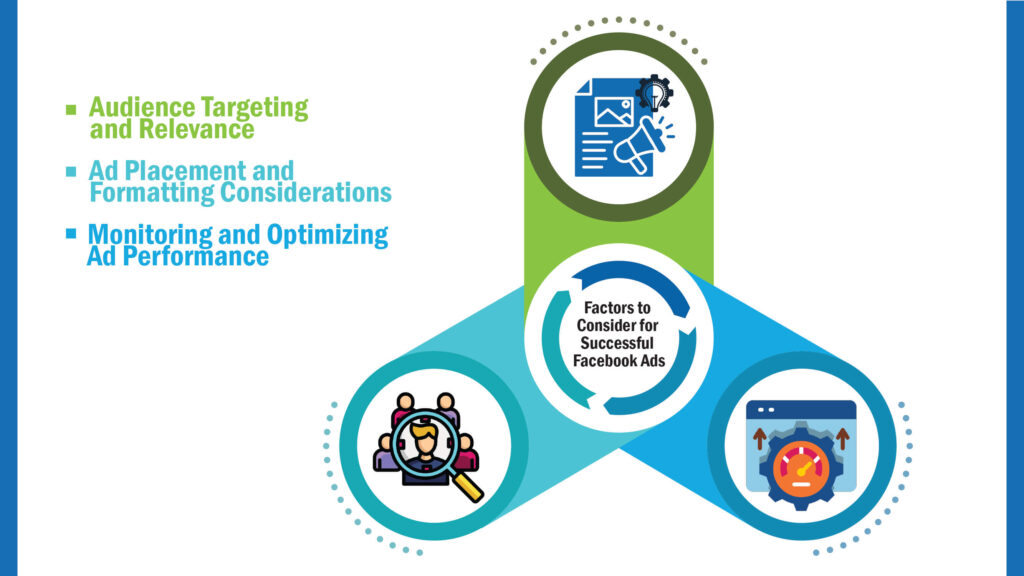
1. Audience Targeting and Relevance:
To ensure the effectiveness of your Facebook ads, consider the following factors related to audience targeting and relevance:
- Tailoring headlines and descriptions based on the demographics: Understand your target audience’s characteristics, interests, and key points. Based on that do Customize your headlines and descriptions to resonate with their specific needs and preferences. This personalization helps create a stronger connection and increase their engagement.
- Incorporating personalization and segmentation strategies: Explore other targeting opportunities on Facebook to target your audience based on demographics, interests, or behaviors. Create different versions of your ads, each tailored to a specific segment. By delivering relevant content to each group, you can easily grab their attention and can increase the chance of getting a lead or a conversion.
Also Read: Targeting Small Business Owners on Facebook
2. Ad Placement and Formatting Considerations:
Experimenting different placement and formatting of your Facebook ads can significantly impact their performance. Consider the following factors:
- Adapting content for different ad formats and placements: Facebook offers various ads types and placement, such as news feed ads, carousel ads, and story ads. Tailor your content to fit each format, utilizing the appropriate dimensions, visuals, and text lengths. Adapting your content ensures it looks fit within the chosen placement.
- Utilizing visual elements to enhance the overall impact: Visuals play a major role in capturing users’ attention. Use high-quality images or videos that are relevant to your offering and resonate with your targeted audience. Incorporate compelling visuals that support your messaging and help convey your brand’s story effectively.
Also Read: Why Hire a Social Media Agency
3. Monitoring and Optimizing Ad Performance:
To drive continuous improvement and to maximize the effectiveness of your Facebook ads, consider the following:
- Using Facebook Ads Manager to track metrics and insights: Facebook Ads Manager provides a bulk amount of data and analytics to monitor the performance and to track metrics such as click-through rates, conversion rates, engagement levels, and cost per acquisition. Analyze these insights to gain deeper insights of your ad performance and improve the area of advertisement.
- Making data-driven decisions to improve ad effectiveness: Regularly review your ad performance data and make data-driven decisions to optimize your campaigns. Identify underperforming ads or elements and make adjustments accordingly. Test different variations, targeting strategies, or creative elements based on the insights you gather. Continuously keep on refining your ads for better performance.
By considering audience targeting and relevance, optimizing ad placement and formatting, and monitoring and optimizing ad performance, you can improve your Facebook Ads Campaign and can effectively increase the chances of achieving your advertising goals.
Conclusion
In conclusion, understanding the differences between Facebook ad headlines and descriptions is very essential to create an impactful ad Campaign.
The headline acts as an attention-grabbing statement, while the description provides complementary text that expands on the message and offers more information.
To create compelling and engaging ad-content, it is very important to maintain consistency and coherence between the headline and description. They should simultaneously deliver a unified message, avoiding confusion or mixed messages.
Balancing creativity and clarity is key, finding the right tone and style for your target audience while being captivating and informative.
Continuous testing, analysis, and optimization are essential for achieving desired results with your Facebook ads. A/B testing different combinations of headlines and descriptions allows you to find the most effective strategies.
Monitoring ad performance using tools like Facebook Ads Manager provides valuable insights that enable you to make data-driven decisions and improve ad effectiveness.
By implementing these practices, you can create compelling and cohesive Facebook ads that capture users’ attention, convey your value proposition, and drive the desired actions from your audience.
Remember, the key to success lies in continuous testing, analysis, and optimization to ensure your ads are always performing at their best.

